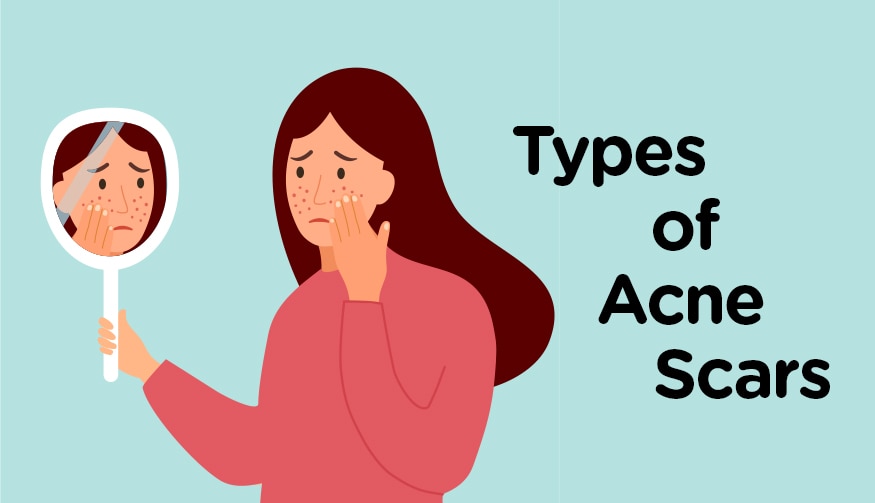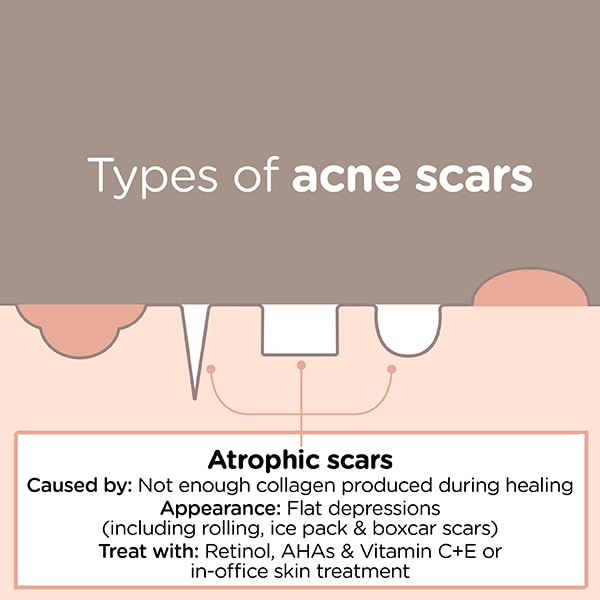Acne scars may leave behind when acne is healed. Makeup helps you cover the scars. How to get rid of acne scars? Here is everything you need to know about acne scars like the causes, the types, and the treatment methods.

Types of Acne Scars
There are 3 main types of acne scars. They are (1) Post-inflammatory hyperpigmentation, (2) Atrophic scars, and (3) Hypertrophic scars. How can we define the types of acne scars? You could refer to the following picture.

(1) Post-inflammatory hyperpigmentation

You can see that the appearance of post-inflammatory hyperpigmentation is brown, red, or purple dark sports. It is caused by too much melanin produced during healing.
How to prevent the formation of post-inflammatory hyperpigmentation? You should apply a broad-spectrum and oil-free sunscreen regularly to protect your skin and avoid sun exposure.
For the treatments, you could use skincare products containing Retinol or AHAs to exfoliate your skin gently. You could also use Vitamin C and E skincare products to reduce pigmentation and brighten your skin.
Post-inflammatory colour changes can be improved with time. It may take several months to completely resolve.
(2) Atrophic scars

Atrophic scars are flat, thin scars or depressed scars, including rolling scars – broad depressions with a sloping edge; ice pack scars – deep, narrow, pitted scars; boxcar scars – broad depressions with sharply defined edges. This type of acne scar is caused by not enough collagen produced during healing.
You can apply skincare products containing Retinol, AHAs for dermabrasion, or Vitamin C and E for boosting the production of collagen.
For severe conditions, you can choose in-office skin treatments like skin needling or laser resurfacing.
(3) Hypertrophic scars

The appearance of hypertrophic scars is keloids, elevated, hard scars. This type of acne scar is caused by too much collagen produced during healing.
Surgical procedures are most effective to treat hypertrophic scars. Potent topical steroids and Silicone gel dressings can be applied to the scars. Intralesional steroid injections, cryotherapy, and surgical revision can improve the skin condition too.
Unfortunately, hypertrophic and keloid scars are particularly prone to recur even after apparently successful surgical procedures.








